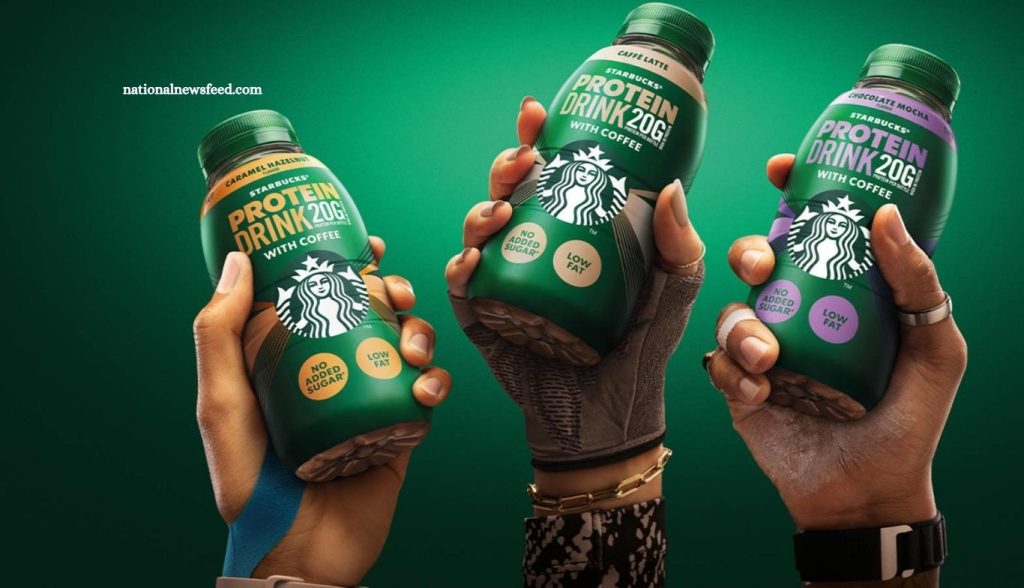Restaurants chains are capitalizing on the growing protein trend, aiming to boost sales by encouraging customers to pay more for protein-rich options amid slower consumer spending. From fitness enthusiasts to users of GLP-1 drugs like Ozempic, many Americans prioritize protein to build muscle and feel fuller longer. Meanwhile, diets low in protein, such as keto, are losing popularity.
“Younger consumers are focused on health both now and in the future,” said Julia Mills, food and drink analyst at Mintel. “Generations Alpha, Z, and millennials, influenced by social media, are embracing the message that protein builds muscle and strength.”
Datassential reports that 33% of consumers favored high-protein options in Q2 2025, up from 24% three years ago. This surge has sparked protein-packed products in grocery aisles—from Eggo waffles to Khloe Kardashian’s protein popcorn—and expanded into restaurant menus aiming to upsell premium items.
Starbucks plans to launch a cold foam with 15 grams of protein later this year, priced slightly higher than its standard option, to combat declining U.S. sales. Similarly, Dutch Bros introduced a protein coffee in early 2024, charging an extra dollar, which contributed to strong same-store sales growth and profits.
‘Never been vilified’
Eateries are targeting diners like Jared Hutkowski, a 42-year-old brokerage director from Harrisburg, Pennsylvania, who works out six days a week and focuses on meeting his daily protein goals for better health and fitness. While he prioritizes protein when dining out, he admits he sometimes chooses pizza based on his mood.
“I usually pick meals with at least one serving of protein, depending on what I’m craving that day,” Hutkowski said.
Read More: E.l.f. Beauty Profit Drops 30% Amid China Tariff Pressures
This year, 28.4% of U.S. restaurant menus feature “protein,” up from just 5.9% a decade ago, according to Datassential. The trend shows no signs of slowing, with projections that over 40% of menus will highlight protein by 2029.
“Protein hasn’t been vilified since it’s rarely linked to negative effects,” said Mintel analyst Julia Mills. However, registered dietitian Diane Han warns that while short-term excess protein is generally safe, long-term overconsumption may lead to kidney issues.
The CDC recommends about 46 grams of protein daily for women and 56 grams for men, varying by body weight.
Protein’s rise on restaurant menus accelerated rapidly in recent years. In 2021, only 11.5% of menus mentioned protein; by 2022, that number jumped to over 25%, according to Datassential. That year, IHOP introduced pancakes with 18 grams of protein each to meet growing demand.
Fast-casual restaurants lead the way in highlighting protein, often letting customers choose or double their protein portions. Salad chain Sweetgreen launched “protein plates” in late 2023, boosting its dinner sales from 35% to 40%.
Convenience drives consumer preferences, with protein-packed beverages gaining popularity. Smoothie King, a longtime protein-focused brand, recently introduced a menu targeting customers on GLP-1 drugs, which can reduce muscle mass. The chain offers easy, on-the-go protein options to support muscle maintenance, explained Lori Primavera, Smoothie King’s VP of R\&D and marketing.
Playing up protein
Many restaurants are choosing to highlight existing protein-rich dishes rather than adding new items that could complicate kitchen operations. For example, Panda Express launched protein plates this year, combining existing menu items into balanced meals that emphasize protein and fiber, developed with a registered dietitian.
Chipotle introduced “lifestyle bowls” in 2019, catering to specific diets like paleo and offering double protein options. Similarly, Chick-fil-A highlighted high-protein choices like grilled nuggets and the Cool Wrap in a recent company blog.
For those adding new offerings, popular protein-packed options include nachos with protein choices, restaurant-made protein bars, and egg dishes, according to Datassential trend expert Claire Conaghan.
Breakfast and brunch chain First Watch has long focused on protein, thanks to its egg-centric menu. CEO Chris Tomasso noted that while the menu hasn’t changed to meet protein demand, TikTok influencers have boosted awareness of its high-protein options.
Still, protein isn’t the only priority for health-conscious diners. Jared Hutkowski pointed out that many restaurant meals are cooked in oils and fats, which can quickly increase daily fat intake.
Frequently Asked Questions
Why are restaurants focusing more on protein in their menus?
Restaurants are responding to growing consumer demand for high-protein options to support muscle building, satiety, and overall health.
Which restaurant segments highlight protein the most?
Fast-casual eateries lead the trend, often offering customizable protein portions and “protein plates” to attract health-conscious diners.
How much protein do adults typically need daily?
The CDC recommends about 46 grams for women and 56 grams for men, though needs vary based on body weight and activity levels.
Are there any health risks to consuming too much protein?
Short-term high protein intake is generally safe, but long-term excess may impact kidney health, especially in those with preexisting conditions.
How are restaurants incorporating protein without slowing down kitchen operations?
Many highlight existing protein-rich menu items or repackage them into balanced meals instead of introducing entirely new dishes.
What kinds of new protein-rich menu items are popular?
Options like protein-packed nachos, restaurant-made protein bars, egg-centric dishes, and specialty protein beverages are gaining traction.
How do social media trends affect protein consumption?
Influencers and social platforms heavily promote protein’s benefits, especially among younger generations, driving demand for protein-focused meals.
Conclusion
The protein trend is reshaping restaurant menus as diners increasingly seek convenient, high-protein options that support their health and lifestyle goals. From fast-casual chains to established brands like Starbucks and Smoothie King, eateries are innovating by highlighting existing dishes or introducing new protein-packed offerings.

